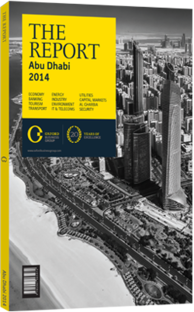Report update: Expanded price index provides additional data to the market
As construction projects ramped up in 2013, the Statistics Centre - Abu Dhabi (SCAD) announced plans to expand the number of indicators included in its monthly report on construction costs. By the end of the year, SCAD announced that it would begin monitoring the price of land and transport in the building material price reports, which currently measure 21 construction costs including those for cement, glass, power cables and labour. “It will help construction people understand how much it costs to build different projects in Abu Dhabi for a villa, tower, roads or bridges,” Hanan Al Marzouqi, the manager of prices and income statistics at SCAD, told local media in June 2013.
Building Costs
During a lull in major building projects after the 2008 recession, building costs fell in Abu Dhabi, resulting in a decline in the value of tender prices. According to international consultancy EC Harris, UAE tender prices fell 3% in 2011, in line with declining costs, and remained stable in 2012. As confidence returns to the construction sector, and neighbouring states launch government-funded infrastructure projects, construction costs are expected to increase. While the UAE plans to spend $90bn on infrastructure in the coming years, Qatar and Saudi Arabia will invest about $100bn and $500bn, respectively, in capital projects, EC Harris said in its winter 2012/13 UAE report. “The UAE is having to compete with these two dominating markets,” the report stated.
SCAD’s expanded price index is a response to the requests of developers seeking to plan future construction. The emirate’s statistical agency has also begun to release monthly inflation data by region, comparing consumer prices increases across Abu Dhabi Municipality, Al Ain and Al Gharbia.
SCAD also releases an annual report tracking the changes in building material prices and monthly reports monitoring fluctuations by month, quarter and year. “The dissemination of this important report, which presents a wide range of price data, is intended to serve the needs of data users in the public and private sectors for the purposes of research, planning and decision making in ways that support the construction sector as well as related and dependent sectors,” the introduction to the September 2013 report stated.
Commodity Data
In the third quarter of 2013, five out of 21 commodity groups recorded stable or higher average prices than in the previous quarter. The price of cement rose by 0.5% in the third quarter of 2013, compared with the second quarter, and by 1.2% when compared with third quarter of 2012. This followed an average increase of 5.6% monthly for cement groups in 2012. The SCAD annual reports measure prices of six cement types and producers: Sulphate Resistance/Al Etihad, Sulphate Resistance/Emirates, Portland Cement/Al Etihad, White Cement/Ras Al Khaimah, Lime/Oman and Gypsum/Oman.
Average prices for the category “aggregates and sand”, which SCAD also breaks down by type and producer, rose 8.3% in the third quarter of 2013 compared with the previous quarter, and 11.1% compared with the same quarter in 2012, following an average monthly price increase of 6.4% in 2012. The categories of natural stone, glass, and roofing tiles also recorded year-on-year (y-o-y) increases in the third quarter.
Employment costs in Abu Dhabi’s construction sector were up 8.1% in the third quarter, compared to the same period in 2012. Broken down by occupation, prices increased most for surveyors, carpenters and steel fixers, where wages rose 22.7%, 10%, and 10%, respectively, between September 2012 and September 2013.
Many of the more easily tradable building materials saw prices fall in the third quarter of 2013 compared with the previous quarter and the previous year. In line with global markets, Abu Dhabi’s steel prices recorded a 3.8% y-o-y drop in September 2013. In 2012, prices for the “steel group”, which includes wires, binding wires and bundles, also fell 8.3% y-o-y.
With the region’s construction sector on the rebound, the expanded data from SCAD is set to provide additional transparency and efficiency to the market.
You have reached the limit of premium articles you can view for free.
Choose from the options below to purchase print or digital editions of our Reports. You can also purchase a website subscription giving you unlimited access to all of our Reports online for 12 months.
If you have already purchased this Report or have a website subscription, please login to continue.

